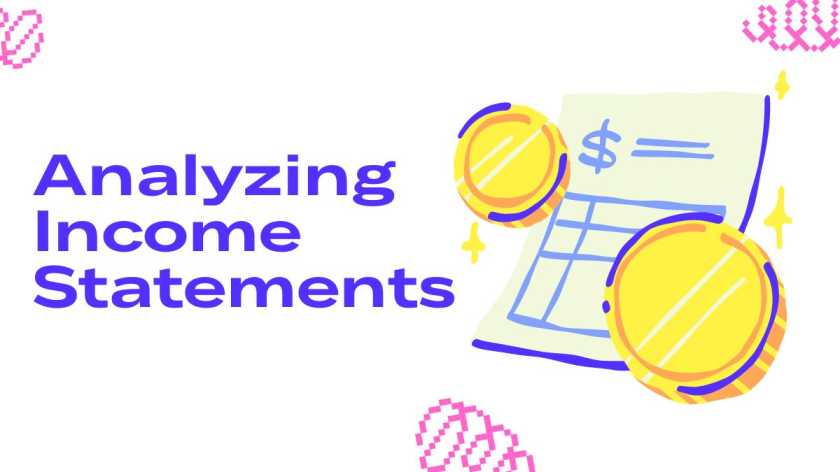Table of Contents
Last updated on September 1st, 2025 at 04:47 pm
What is an Income Statement?
Income statements are defined as financial reports that are used by businesses to keep track of the expenses, gains, revenue, and losses of the company during a set period. These income statements are also known as the statement of revenue or the profit and loss (P&L) statement. They are considered one of the three most important financial statements used to analyze and report a company’s financial performance during a set accounting period. This statement provides crucial insight into the operations of the company, the sectors that are underperforming, management efficiency, and the performance of the company as compared to the competition.
Now that you understand what an income statement is, keep on reading to understand how to analyze income statement based on key metrics.
How to Analyze Income Statement?
To analyze income statements, the two techniques that are most frequently used are vertical analysis and horizontal analysis.
Vertical Analysis
Vertical analysis is a financial analysis technique where each line item in the statement is listed as a percentage of a base amount. This technique involves scrolling down a single column of data in an income statement to analyze how various line items relate to one another.
As relative proportions can be seen, vertical analysis makes comparison of income statements between companies, industries, and periods simple as well as convenient. It can be easily used to analyze whether the key performance indicators are progressing.
Horizontal Analysis
As explained above, vertical analysis focuses on each line item as a percentage of a base figure within a current period whereas horizontal analysis compares as well as reviews changes in the ₹amounts in an organization’s income statements over multiple reporting periods. Horizontal analysis is also used in absolute comparisons but it can be used as percentages too.
Horizontal analysis is valued over vertical analysis by investors and analysts as it can improve the reviews of a company’s consistency over time, as well as its growth compared to competitors. Moreover, if used correctly this analysis can also help you identify factors that influence the financial performance of a company over time. Analysts also use this technique to spot trends throughout time, like comparisons between Q1 and Q2, instead of displaying how specific line items connect.
When you analyze an income statement, the question should not be which technique is the best- vertical or horizontal. You should learn how to effectively combine both types of analysis to unearth critical data needed to make the right decision for your company. If you combine both techniques, you can gain more insight than using just one of the methods.
5 Key Metrics to Focus On When Analyzing Income Statement?
When analyzing income statements, all the available financial data is important to gain an insight into the financial health of the company, however, there are certain key metrics that you must focus on. These include:
Revenue
Also referred to as sales, revenue represents the amount that a company earns through normal operations and sales of goods or services to customers over a set period. Revenue data includes:
- Revenue by product
- Revenue by customer/channel
- Revenue by location
Gross Margin
This is a key profitability metric as it provides a snapshot of how much revenue remains once the cost from product and service production is deducted. The formula for gross margin is:
Gross Margin = Revenue – Cost of Goods Sold
Gross Margin % = Gross Margin/Revenue
This kind of categorisation is important to implement cost-controlling initiatives effectively.
Contribution Margin
This is a profitability metric that plays a key role in analyzing performance at a product or service level. Contribution margin is a crucial metric used to evaluate the scalability of the business in conjunction with a cost-volume-profit-analysis.
Contribution Margin = Product Revenue – Product Variable Cost
Net Income
Net income is an indicator that tells about a company’s bottom line or the overall profitability of the business. This is a simple and effective metric that helps determine how much revenue exceeds expenses or vice versa.
Net Income = Revenue – Expenses
Earnings Before Interest, Taxes, Depreciation, and Amortization (EBITDA) and Management Adjusted (EBITDA)
EBITDA also known as Management Adjusted EBITDA, are non-GAAP metrics that are used to analyze and assess the performance of the company as a proxy for operating cash flow. This metric allows business owners to determine the financial health of a company, without taking into consideration the impacts of financing and accounting decisions.
EBITDA = Revenue – Expenses + Interest + Taxes + Depreciation + Amortization
Conclusion
Income statements play a crucial role in displaying how a business or company makes or spends money over time. With the help of an income statement, you can learn a lot about the business’s health and a comparison of income statements of several years can also highlight important trends.
If you want to build a career in the world of finance, then a Chartered Financial Analyst (CFA) charter is a finance credential that can open doors to diverse opportunities. The CFA course by Imarticus Learning covers economics, investment analysis, accounting, and ethics in a well-structured curriculum that can significantly boost your career.

